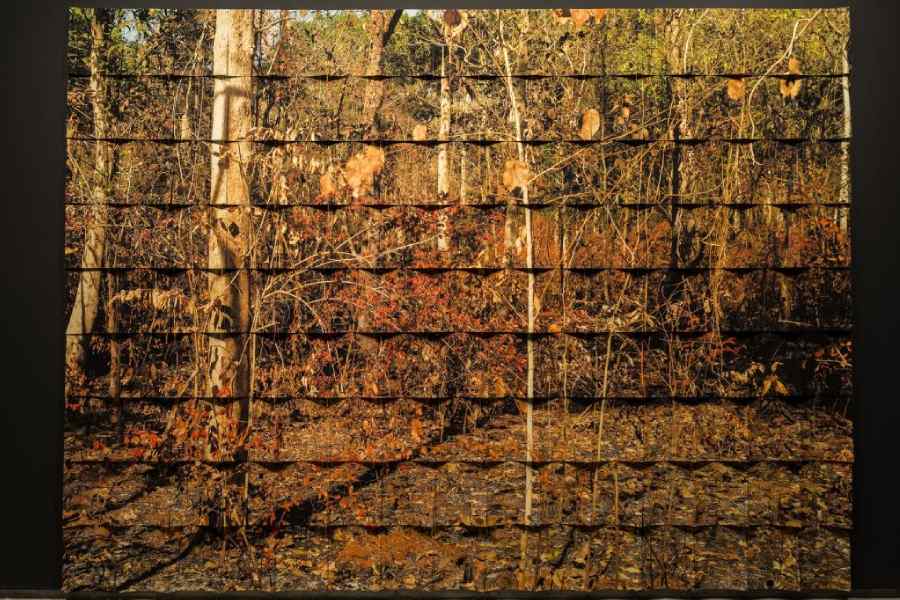The seemingly unassuming title of the show, Weather Report, does not prepare viewers for the multi-sensory experience that is in store for them at Experimenter, Hindustan Road. Even before one’s eyes get used to the darkened gallery where Tenzing Dakpa’s solo show (on view till July 27) is set up, the olfactory sense is stimulated by a smoky smell and the ears catch fleeting sounds of a crackling fire. In this dark, cavernous space, illuminated by spotlights are Dakpa’s photographic works, Manifest and the eponymous Weather Report.

Mornings at Naikavaddo (2023) by Tenzing Dakpa Tenzing Dakpa & Experimenter
The former documents the various stages of a man-made forest fire in Goa — there are tracts that are completely charred, the fire snaking across the landscape, and areas of dry kindling waiting to be set alight. What makes the viewing of these photographs eerie — besides the smell of smoke and the constant refrain of forest sounds such as animal calls, crickets, and twigs snapping underfoot — is that the images have been shot not in perfect light but in dark with the harsh, searching light of the flash illuminating certain parts, leaving others pitch dark. In these dark spots, the black pigment ink has accumulated on the acid-free paper to imitate the visual effect of soot and to give the impression that the landscapes are suspended in nothingness. Dakpa has further crumpled these prints with his hands, leaving them creased and undulated like a forest floor carpeted with dry leaves. The photos are dramatic in their stillness — the fire, the foliage are all frozen in time — with the acrid smell and soft sounds creating an ominous atmosphere.
In Weather Report, too, a fleeting moment in time across a seemingly innocuous landscape is captured by the artist. Dakpa abjures the modern-day obsession to train high-powered lenses to shoot a scene in granular detail. His style is more impressionist and natural: some details stand out while others are blurred in no particular order. These large scenes are comprised of many small prints pinned together like a pointillist work. The edges of each print fold and bend with the breeze animating the otherwise unstirring landscapes.
Dakpa’s photographs capture a moment on the precipice of a catastrophe. Along with the scent of smoke, the questions that linger in the minds of the viewer are these: can the fire of the Anthropocene be put out and is there hope of regeneration?










